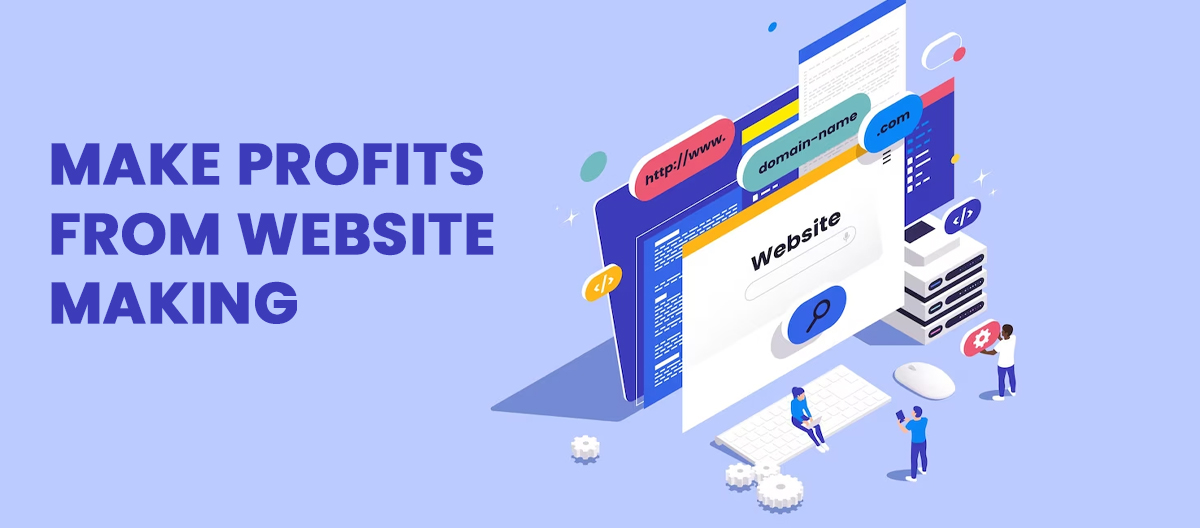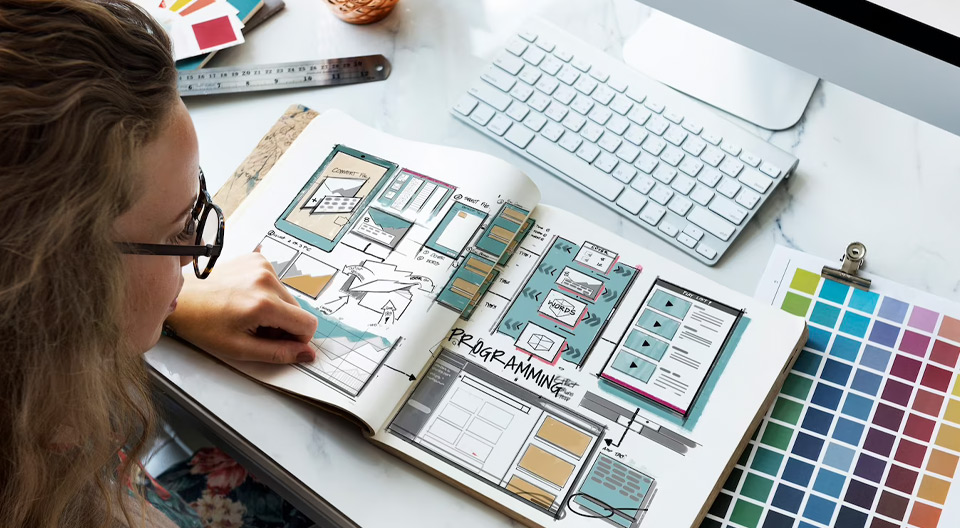Introduction
In the digital age, having a strong online presence is crucial for businesses and individuals alike. Websites serve as virtual storefronts, marketing platforms, and communication hubs. But beyond their functional utility, website making can be a profitable venture in itself. In this blog, we will explore how you can turn your web design and development skills into a thriving business and make a profit from website making.
Mastering the Art of Website Making
Understanding Website Making
Website making, or web design and development, is the process of creating websites from scratch or enhancing existing ones. It involves various skills, including HTML, CSS, JavaScript, and often CMS (Content Management System) knowledge, among others.
Build a Strong Skill Set
To excel in website making, it’s essential to continually update and expand your skill set. You can start by taking online courses, attending workshops, and following industry blogs and forums.
Creating a Portfolio

Why a Portfolio Matters
A portfolio is your digital resume, showcasing your skills and abilities as a website maker. A strong portfolio is essential to attract clients and build your reputation.
How to Build a Winning Portfolio
Diverse Projects: Showcase a variety of projects to demonstrate your versatility.
Case Studies: Include case studies that explain your approach to each project, highlighting the challenges and solutions.
Client Testimonials: If possible, include client testimonials to add credibility and trustworthiness to your portfolio.
Identifying Your Target Audience

Niche vs. General Approach
You can choose to specialize in a particular niche, like e-commerce websites, or offer a broader range of services. Identifying your target audience will help you tailor your services and marketing efforts.
Understanding Client Needs
By understanding the unique needs of your target audience, you can provide solutions that truly meet their requirements, making you a more attractive choice.
Building Your Online Presence
Website for Self-Promotion
Having a professional website for self-promotion is essential. It’s the first place potential clients will look when considering your services.
Utilize Social Media
Social media platforms can be a powerful tool to showcase your work, engage with your audience, and network with potential clients.
Pricing Your Services

Determining Your Pricing Structure
There are different pricing models for website making, including hourly rates, fixed project fees, and retainer contracts. Consider your skill level and market competition when setting your rates.
Value-Based Pricing
Consider the value your service provides to your clients. Clients often recognize the long-term benefits of a well-designed website, so don’t undervalue your expertise.
Finding Clients
Utilizing Online Marketplaces
Websites like Upwork, Freelancer, and Fiverr can connect you with clients looking for web design and development services.
Networking
Attend local and industry-specific events to network with potential clients and other professionals in your field.
Cold Outreach
Sending personalized cold emails or reaching out through social media can also be an effective way to find clients.
Delivering Exceptional Services
Client Communication
Effective communication is key to ensuring the client’s vision is realized. Regular updates and transparency build trust.
Setting Realistic Expectations
Be clear about project timelines, deliverables, and expectations from the beginning to avoid misunderstandings.
Quality Assurance
Ensure your websites are thoroughly tested and optimized for different devices and browsers to provide the best user experience.
Marketing Your Services
Content Marketing
Regularly publishing informative blog posts or videos about web design and development can establish you as an industry expert.
Email Marketing
Building an email list allows you to directly connect with potential clients. Share valuable content and updates about your services.
Social Proof
Leverage the power of testimonials, case studies, and examples of your successful projects to showcase your expertise and build trust.
Expanding Your Services
Upselling and Cross-Selling
Once you have a client, consider offering additional services, such as website maintenance, SEO optimization, or content creation.
Scaling Your Business
As your client base grows, you may consider hiring additional talent to help with larger projects or expanding your services to cover related areas.
Profit Optimization

Streamlining Operations
Efficiency is key to maximizing profits. Look for tools and software that can help automate repetitive tasks.
Constant Learning
Stay updated with the latest industry trends and technologies to ensure you’re always offering the most competitive and relevant services.
Setting Goals
Regularly set goals for your business to ensure it continues to grow and thrive. These goals can be financial, such as monthly revenue targets, or skill-related, like learning a new programming language.
Conclusion
Website making is not just an essential skill; it’s a business opportunity waiting to be harnessed. By mastering your craft, building a strong portfolio, understanding your target audience, and delivering exceptional services, you can turn your website making skills into a profitable venture.
The digital landscape is constantly evolving, offering endless possibilities for those who are ready to seize them. Whether you’re a freelance web designer or an agency owner, the path to success in website making is both rewarding and promising. So, start crafting your success today and embark on a journey to make a profit from website making.

























